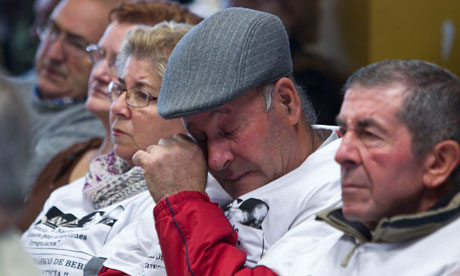 Canadian Adoptee lobbies UN Commission on the Rights of the Child
Canadian Adoptee lobbies UN Commission on the Rights of the Child
Halifax (PRWEB) April 22, 2004 -
— Canada not doing enough to open up adoption records, UN says. Provincial governments throughout most of Canada could be doing a lot more to help adopted children find their birth parents, says the draft report of a UN committee.
The UN Committee on the Rights of the Child met in Geneva last month to review Ottawa’s record of implementing an international convention designed to improve protection for children throughout the world.
“The committee is concerned by the fact that certain provinces do not recognize the right of an adopted child to know, as far as possible, her/his biological parents,” said an Oct. 3 draft report obtained by The Canadian Press.
“The committee notes that while adoption falls within the jurisdiction of the provinces and territories, the ratification of the Hague Convention has not been followed up by legal and other appropriate measures in all provinces.”
While the UN report does not name the provinces, an expatriate Canadian who lobbied the commission on the adoption issue in Geneva said Nova Scotia tops the list when it comes to keeping records closed.
“It’s an absolute disgrace,” Ron Murdock said in a recent interview from Amsterdam. The other provinces that restrict access to adoption records are New Brunswick, Prince Edward Island, Ontario, Manitoba and Quebec.
“What we’re asking for is not painful reunions,” said Mr. Murdock, who was adopted out of the infamous Ideal Maternity Home in Chester, N.S., which was chronicled in the book .Butterbox Babies “Opening adoption records does not automatically mean painful reunions are thrust on people who don’t want to meet. What open adoption records should entail is: release of information and then contact, but only if desired.”
In a submission to the UN Commission, Mr. Murdock argued that Canada was violating the international charter on the protection of children by allowing provinces to continue their restrictive practices.
“How can you sign the United Nations charter on the rights of children and have sealed adoption records?” he asked. “The charter clearly states that a child has the right to know who it is and from whence it comes.”
While the commission did not go as far as to say Canada is in breach of the agreement, Mr. Murdock said, it’s clearly worded rebuke was heartening to see.
Mr. Murdock, 62, a singing instructor in some of Europe’s best opera houses, has spent the better part of 27 years trying to get information on his biological parents. His journey began when his son was diagnosed with Down’s Syndrome.
With the advent of genetic screening for many diseases, it’s more important than ever that adopted children have access to their records, according to a group that represents birth mothers.
“There are thousands of inherited diseases,” said Karen Lynn of the Canadian Council of Natural Mothers, which supported Mr. Murdock’s submission.
“If you have a group of people who can access knowledge about their inherited diseases and another that can’t, it amounts to discrimination. This is what has emerged with modern medicine and the ability to identify in advance genetic disease.”
Nova Scotia was singled out by Mr. Murdock, not only because it was his birthplace, but because of the Conservative government’s spectacular failure four years ago to open up the system.
In the fall of 1999, the newly elected government of Premier John Hamm moved quickly to fulfill a campaign promise of more open access to adoption information.
The bill was withdrawn after an emotional and bitter debate through public hearings and in the legislature.
“The bill was shot to pieces in the house,” said Mike Slayter of Parent Finders Nova Scotia.
“I suspect it will take a court to order the province to open adoption records now.”
The province has taken what critics have described as a couple of meek steps forward by telling new birth and adoptive parents that their records may be opened years down the road, but has staunchly refused to open older files.
“The understanding that was in place when the birth parents gave up the child for adoption was that their identities would be protected,” said David Morse, Nova Scotia’s community services minister.
“This is a really sensitive area.” The only way adoptees and birth parents can be reunited now in the province is if one or the other contacts the government, which will make discrete inquiries to see if contact is desired.
Mr. Morse said there are no plans to rewrite the legislation in the near future, although provincial officials will study the UN commission report.

















